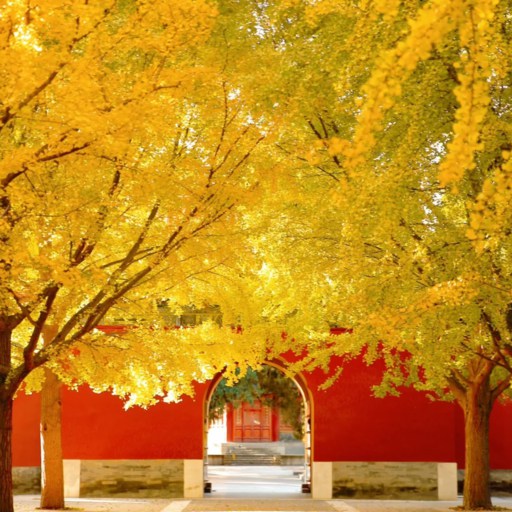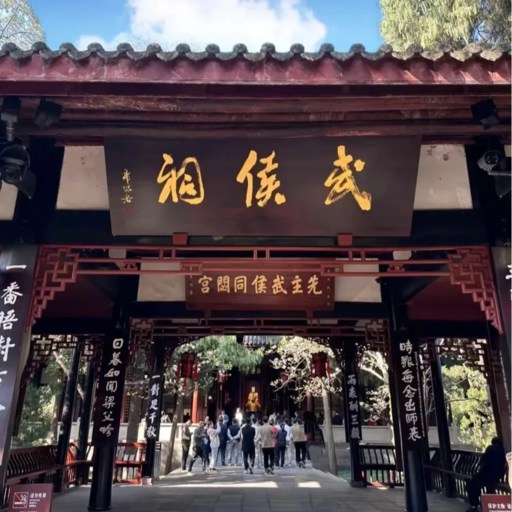Traveling to the Great Wall of China is not just a journey; it's an expedition through history, culture, and stunning natural scenery. It spans over 13,000 miles and is filled with thousands of years of history, offering an incredible experience for those seeking exploration, amazement, and a glimpse at one of the truly great wonders of human engineering. Whether it’s your first time at this historic site or you're planning a repeat visit, understanding how to prepare and make the most of your visit is crucial. This guide will give you valuable pointers to ensure your Great Wall experience is one of a kind, ranging from selecting the ideal sections to tips for a more enjoyable and enriching experience. This is the time to prepare for a journey you will cherish forever.
When is the Best Time to Visit the Great Wall?
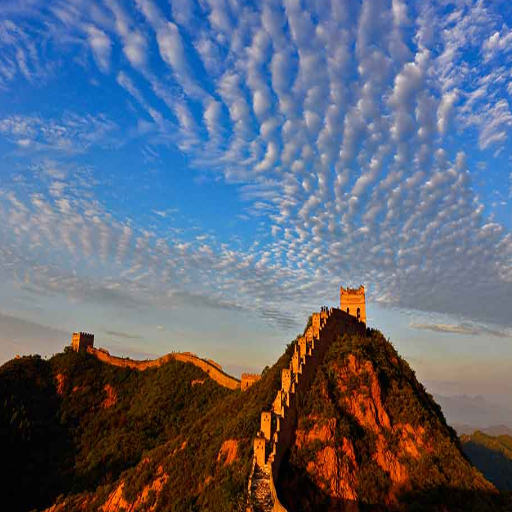
The Seasons and Why the Great Wall Matters
The Great Wall of China continues to be one of those destinations that changes with the passing seasons, and is beautiful and can be explored at every step of the year. From March to May, it's the spring season when the temperature is at its best and flowers bloom, providing a scenic backdrop to the ancient stone walls. Pack extra light layers, of stronger material than cotton, due to occasional winds. From June to August, the wall can be vividly seen covered in thick green vegetation and clear blue skies. There are some downsides, though, such as a higher number of visitors and hotter temperatures. For a better visit, don’t forget water along with sunblock.
The best time to visit the Great Wall is in Autumn from September to November. The weather cools down along with the temperature, while the scenery is elevated by the breathtaking red and gold foliage, with notable areas being Mutianyu and Jinshanling. There is a serene atmosphere bordering the wall, and the snow adds a glass-like finishing touch. Everything begins to change when the calendar approaches December. The elevated solitude means significantly reduced crowds, but snow-covered walls mean it's freezing, alongside seasonal temperatures. Make sure you have adequate winter clothing this time to enjoy the quiet, tranquil beauty of the wall.
Every season has its beauty and challenges, so understanding the situation and preparing in advance can go a long way to ensuring your trip is comfortable and pleasant.
Peak Times for Scenic Views of the Great Wall
Issuing massive fantastic scenery and scenic views, the Great Wall is best explored and viewed in spring (March to May) and Early Autumn (September to November). The landscape transforms as vivid flowers bloom and greenery flourishes, giving a lively backdrop to the ancient structure. During this period, moderate temperatures and clear weather tend to prevail, making outdoor exploration comfortable.
Visiting the wall in Autumn, also known as fall, offers a spectacular display like no other. The crisp air, along with red, orange, and golden hues, leaves enhance the dryness, making it easier to walk across the Wall’s rough terrain. During these times, the soft sunlight illuminating the wall and background is stunning, and early mornings and late afternoons are particularly magical.
Visitors planning their trips should consider that weekends and holidays may have high traffic volumes, especially in popular areas like Badaling and Mutianyu. Going during off-peak times or to less-visited eastern or western sections can significantly enhance the experience, offering tranquil serenity alongside breathtaking views.
Weather Considerations For Your Trip To China
China's massive size and diverse geographic regions, divided into various zones and seasons, result in different climates. To plan your travel strategically, it's essential to check the weather conditions in the regions you plan to visit. For example, in the north, China is home to cities like Beijing, which is also near the Great Wall. It suffers from harsh, dry winters and hot, humid summers. Spring and autumn are the most pleasant seasons here. It also enables clearer skies, which makes these times favorable for sightseeing.
Southern China, which includes areas such as Guangzhou and Guilin, has a subtropical climate with hot, humid summers and mild winters. The months of April to September are stormy, so it's recommended to bring the proper rain gear if you're traveling during this period. On the other hand, Tibet and Xinjiang are considered western regions with higher altitudes and drier weather. Although the summer months are better suited for outdoor activities, the winter months can be especially harsh, with heavy snowfall and subzero temperatures.
Travelers should note that the period from June to August can be stormy in central and eastern regions, often resulting in travel restrictions. Always check the weather forecast before setting out on an outdoor excursion. Ensure you adjust your itinerary and packing list according to the weather at your destination to maximize comfort and enjoy a hassle-free trip.
What to Expect on a Great Wall Tour?
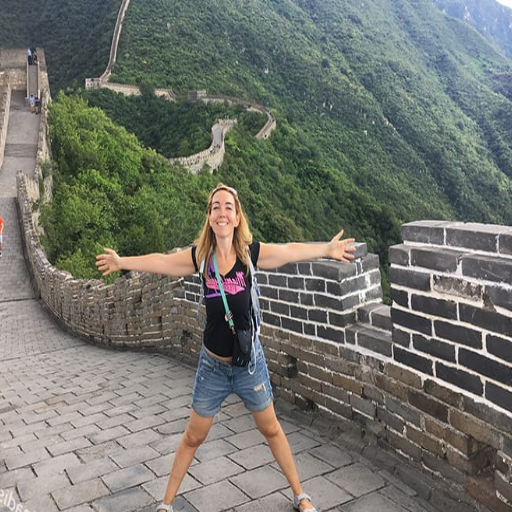
Tips for Choosing the Best Great Wall Tours
Your visit can be a lot more enjoyable considering the key sections of the Great Wall and its surrounding features. Its chains span miles, which means there are different sections to explore, with each differing in beauty. Mutianyu and Badaling are well-known for their preservation and easy access, making them great options for first-timers and families. Alternatively, Jinshanling and Simatai are more suitable for seasoned travelers, as they offer stunning views along their unedited trails.
For private tours, the information and deep knowledge about the Wall’s historical significance, combined with a focus on your interests and activity levels, can make your experience very memorable. Group tours, on the other hand, are the opposite. These types of tours become very affordable and a fast way to meet new people. Different parts of the package may include, but are not limited to, transportation, tour guides, and other must-see places like the Ming Tombs or local villages, adding tremendous flexibility to the tour.
Those interested in exploring unknown areas with longer, more rugged treks should consider specialized hiking tours. No matter if you enjoy history, photography, or are just an admirer of the Wall itself, choosing a reputable tour provider guarantees, and more importantly, fulfills that offer.
Features of the Scenic Area Mutianyu Great Wall
About 73 kilometers northeast of Beijing lies the Mutianyu section of the Great Wall, which showcases both historical and natural beauty. Having undergone impressive restoration, this section is 2.5 kilometers long and features 23 watchtowers, offering visitors an insight into China’s ancient architectural wonder.
The surrounding area of Mutianyu is unique because over 90% is covered by lush forests, making it an outstanding location year-round. In spring, flowers come alive, while in fall, foliage transforms into reds and golds. Also, the modern cable car and toboggan ride make it easier for families to access the bottom.
At Mutianyu, visitors revel in the steep gradients and the uniquely "U'-shaped section of the wall, which showcases its strategic defensive value. The neighboring facilities complement this experience with a variety of visitor centers, cafes, and cultural shops, which enhance the overall comfort during your visit. This amalgamation of rich history, stunning nature, and features that cater to customers' needs makes Mutianyu an indispensable stop on everyone's journey to the Great Wall of China.
Wall Hiking: What to Bring and Wear
For a hike along the Great Wall, careful planning is needed to determine what to pack and wear to make the most of the experience. Special attention should be given to the feet, as they are the first point of contact with the wall. They should be clad in comfortable, supportive, and sturdy hiking boots. As the flagstones are uneven and steep, the rest of the surfaces are rugged; boots are a must. Also important is to wear layered clothing, as the weather changes depending on altitude, season, and time of year along the Wall. During the warmer months, moisture-wicking shirts are the best way to stay dry, while a lightweight jacket helps combat sudden temperature drops.
Other essential accessories include a hard-wearing backpack to store items like snacks, drinks, sunscreen, or a hat for sun protection. Staying hydrated during your hike is necessary, so a hydration pack or a reusable water bottle is crucial. If you enjoy photography, a compact camera or smartphone can help you capture stunning scenery, but remember to keep it secure when clambering up steeper sections. Lastly, for those unaccustomed to hiking, lightweight trekking poles are great for providing extra support on more technical sections of the trail.
Wearing the proper clothing and carrying all the needed equipment helps hikers enjoy the experience while remaining safe and comfortable throughout the journey.
Which Sections of the Great Wall Should You Visit?

The Great Wall of China: Visit Mutianyu, Badaling, and Jinshanling
When venturing to the Great Wall of China, some sections tend to receive more attention. These include:
Mutianyu: This section of the Great Wall is generally less crowded, making it perfect for families. In addition, it offers a cable car, making it easier to access the wall's many scenic views.
Badaling: Everyone knows how famous this section of the Great Wall is. This part of the wall is straightforward to access. Moreover, it has clear paths for walking, which makes it great for first-time visitors.
Jinshanling: For those who consider themselves outdoor enthusiasts, this option offers great views, both picturesque and scenic. At the same time, the section is only semi-reconstructed, meaning walkers can enjoy nature without too much artificiality.
The Great Wall of China provides unforgettable experiences that can be tailored to meet different preferences at various sections.
Badaling and Jinshanling Section Comparison
In terms of accessibility, atmosphere, and the nature of the hike, Badaling and Jinshanling differ starkly.
Accessibility: Out of all options, Badaling is the easiest option in terms of accessibility. Public transport frequently goes to the site, and the roads are well-kept. For Jinshanling, there are some means of transport, but getting to the section may require extra arrangements.
Atmosphere: The reasons why Jinshanling receives fewer tourist visits when compared to Badaling are that Badaling is hectic and bustling with tourists, both locals and foreigners. Jinshanling, on the other hand, is quieter, providing peace and calm for customers visiting.
Hiking Experience: Jinshanling is ideal for people interested in more rugged and adventurous pathways, including unrestored portions and photographic sites, while the Badaling Path is more family-oriented and favorable for casual visitors, with restored pathways and easier navigation throughout the path.
Both places offer distinct preferences, allowing customers to make a selection that suits their interests.
Uncovering the Unrestored Regions of the Great Wall
Withering weather conditions and the passage of time have made sections such as Jiankou or Simatai West easier to explore. It enables visitors to interact with buildings while their structures during construction have mostly remained rigid due to centuries of weathering. It allows visitors to relish and capture breathtaking glimpses of the sun shedding its rays, replacing nighttime shadows on a steep path, enhancing the view, and the cliffs surrounding it. The steeper pathways, laced with crumbling stone, give sightseers a glimpse of pleasure, making it favorable for adventurous hikers and offering breathtaking viewpoints. Simatai, on the other hand, is less traveled, with magnificent towers encircled by the wall, attesting to the age-weathered architectural wonder that gives testimony to the Wall's timeless elegance and endurance over the years.
Because these areas are more remote and lack modern development, planning is essential. Visitors are advised to wear sturdy walking shoes, bring enough water, and exercise caution, as the regions may contain loose rocks or steep slopes. Although these sections may not have the comforts of the more restored areas, the experience offers an incredible sense of history and stunning nature for this historical feat of engineering.
What Activities Can You Enjoy at the Great Wall?
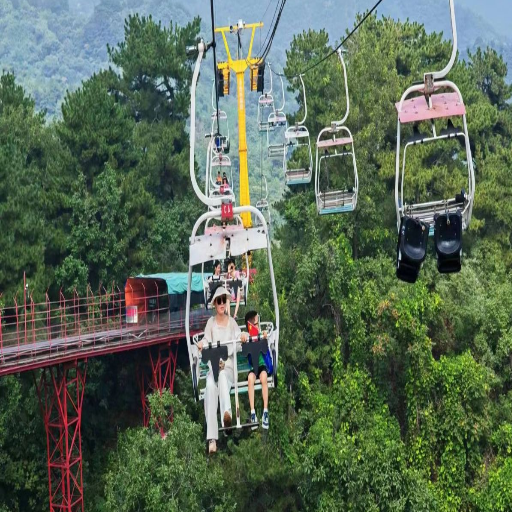
Cable Car Rides and Toboggan Fun
Harnessing the ever-so-popular cable car rides and toboggan runs makes visiting the Great Wall of China far more exciting for the entire family. Not only do visitors gain a bird 's-eye view of the breathtaking scenery during the car ride, but they also get to experience the landscape from a whole new perspective. The Mutianyu section is particularly famous for its cable car rides, as it offers magnificent views of the vast hills and thick greenery that stretch far beyond the horizon.
The toboggan ride provides family-friendly fun, allowing visitors to slide down a lengthy, winding metal track while controlling their speed with an easy-to-use brake. This toboggan experience is famous among tourists, and when combined with the cable car ride, it allows visitors to blend adventure with tradition. Even the most seasoned travelers will be mesmerized by the views and never forget the unforgettable memories created from the activities these attractions offer.
Guided Hikes vs. Self-Guided Adventures
Whether you are scaling the Great Wall of China or visiting other attractions, the difference between guided hikes and self-adventures is substantial in the unique experience each of them has to offer. For example, guided hikes will benefit from the instructor’s point of view, as they will share the history, hidden details, and the importance of the place being visited. Theirs is more structured as they will have attendance lists and essential milestones to track, which helps them avoid the typical tourist mistakes. And for socialization, guided hikes have that as well as the chance to meet other travelers.
Self-guided adventures are more tailored to flexible individuals. Without the time constraints, self-guided visitors can choose their own pace, admire the scenery from viewing spots, and head out to calmer portions of the path. Yes, this requires more work, such as practicing and checking out paths and rough maps, but the freedom and sense of exploration alone make the effort worth it. There is no single answer to which option is better, and in truth, it depends on the person’s chosen comfort level and desired immersion.
Photography Opportunities at Watchtowers
In terms of photographic opportunities, watchtowers serve as the most convenient and ideal places. They provide picturesque scenes of landscape and wildlife photography, including birds and distant horizons that haven’t been discovered yet. The increase in height allows for the capturing of wide scenes alongside exceptional depth and detail. The best times for photography are the golden hours, which are immediately after sunrise or just before sunset. During this time, the light becomes softer and more diffused, while the colors and compositions become warmer. Several watchtowers are built in areas which are rich in beauty, paired with mountain ranges, thick forests, or over water bodies. These natural marvels help photographers experiment with a wide variety of themes, ranging from dramatic silhouettes to panoramas.
Furthermore, many modern watchtowers come equipped with platform sections that are custom-designed to offer the best grip surfaces for a photographer's long exposure tripod. For astrophotography lovers, remote watchtowers can be great places to escape light pollution and capture the star-speckled sky or the Milky Way. The incredible versatility of watchtowers makes them an all-time visit for amateur and professional photographers alike who are searching for inspiration.
How to Create an Itinerary for Your Great Wall Trip?

Sample Itineraries for a Day Trip to The Great Wall
I choose which section of the wall to visit first while planning a day trip to the Great Wall because each section offers a different experience. For example, Mutianyu is attractive to families and people seeking a well-preserved section with fewer people around. At the same time, Jinshanling draws more adventurous tourists and photographers due to its rugged beauty and dramatic scenery. After selecting the preferred section, I make transportation arrangements. Private cars and guided tours. These options are great because they include local guides' H1 insights, which usually cut straight to the deal.
In H2, to remember my time, I usually try to arrive no later than mid-morning because I want to bypass the rush and have plenty of daylight to work with. To ensure I get the batteries charged for the rest of the day, Mutianyu features sights such as restored sections of the wall and a cable car ride. I give myself enough time to stroll about at Jinshanling, where the stunning mountain looks far away, and the unrestored parts of the wall. Together, I figure out the times I need to grab lunch, either from local joints or to prepare my picnic.
Lastly, I always make sure to set aside time for tranquil activities, such as leisurely exploration, absorbing the atmosphere, and delving into the historical essence of the site. From taking photos of the watchtowers to listening to the guides about the Great Wall's history, a day is often enough to enjoy what the Great Wall has to offer, thanks to its meticulous planning. It is also important to note that during the day trip, an early start combined with efficient planning will make the day feel memorable and immersive.
Incorporating Other Attractions Around the Great Wall
It is not only possible to combine a trip to other attractions of Beijing, but it also works perfectly as a single-day trip. After witnessing the majestic beauty of the Great Wall, heading deeper into the heart of Beijing is simple to explore more of the villages. Tiananmen Square and the Forbidden City are perfect choices, as they provide a glimpse of China's imperial heritage. While walking through the Forbidden City, I felt deep pride in the country because the architecture and sight details were breathtaking. The best part about both locations is that they are close to each other, so you can easily cover both within the same trip.
During the evenings, I like to walk around the Summer Palace. I find the place to be rather soothing. The Fantastic botanical gardens, ancient pavilions, and tranquil lakes ring the Summer Palace and provide relief from the city's hustle and bustle. Or I could go to the Temple of Heaven, a remarkable piece of ancient Chinese architecture set in a vast park where locals practice Tai Chi and fly kites.
To avoid mishaps, I usually plan my itinerary. Waking up early on specific days allows me to schedule transportation, purchase tickets early, and calculate the time needed to travel between chosen locations. These sights, combined with my trip to the Great Wall, will enable me to behold the essence of Beijing’s history, culture, and natural beauty in one unforgettable excursion.
Things to Keep in Mind for an Unforgettable Great Wall Experience
Comfort starts with the proper clothing and shoes when you're at the Great Wall. I make sure to bring along good, sun-friendly layers and breathable clothes that fit the appropriate weather. The day of my visit, I make sure to keep an eye on the forecast just in case things shift. That said, the Great Wall doesn't have many vendors in the more isolated portions, so I bring a reusable water bottle to ensure I stay hydrated.
Knowing when to visit the wall makes all the difference. For instance, the traffic is lighter at Badaling during the weekdays or early in the morning, which is excellent. I prefer visiting Mutianyu or Jinshanling because I can take breathtaking photos in peace. Purchasing tickets or tours in advance also soothes stress and saves time.
To conclude, taking a step back and reflecting on the history around me is just as important as the rest. Appreciating the wall’s background further deepens the bond I feel with every step taken on this ancient structure. This feeling results in magic. It's vital to set break times to sit, rest, calm down, and make the most of these moments. Not just photographs, but moments are needed to fully experience the spirit of the wall itself.
Frequently Asked Questions (FAQs)
Q: Which specific locations on the Great Wall of China are most recommended for traveling?
A: Among the Great Wall sections, the Badaling section has been restored and is very popular among tourists. Meanwhile, the Mutianyu section is scenic, and both of these sections are crowded and overrun with large numbers of visitors. The Gubeikou and Simatai sections are less popular, but provide less crowded alternatives. The adventurous Jiankou section is something that is off the beaten path.
Q: What is the most efficient way to access the Great Wall of China from Beijing Main City on the Map?
A: From the center of Beijing, the Great Wall can be reached with relative ease using public buses. Similarly, taking the subway can give you direct access to the wall. There are shuttle services available that will take you directly to the sections you request, such as the popular Badaling or Mutianyu. These can also be provided through guided tours before boarding the shuttle.
Q: When is the most favorable period in the calendar year to visit the Great Wall of China?
A: For visiting the Great Wall, the most favorable time is during Spring or Autumn; these are often known for mild weather conditions, and the lowlands are scenic. Avoiding the high tourist season during summertime is recommended due to large crowds; these times of the year offer smoother access with fewer tourists.
Q: What unique activities can be done at the Great Wall?
A: Some unique activities to do at the Great Wall include hiking between different sections of the wall, riding a toboggan down from the wall, and riding a cable car to offer a bird’s eye view of the wall and its surroundings, while providing stunning views of the landmark and its surroundings. Don’t miss the chance to discover them all, because every section offers a different experience.
Q: What are some suggestions to make your trip to the Great Wall of China memorable?
A: Some suggestions to make your trip to the Great Wall of China memorable include booking a professional travel guide that specializes in the area’s history and architecture. Be sure to check out alcoves like Huanghuacheng and Gubeikou to get a more personal escape from the crowds.
Q: What should I wear if I visit the Great Wall of China?
A: You will need to wear mountain-suitable, portable lower footwear, like cruiser shoes or grip-style sneakers, because comfortable shoes are recommended for the hiking sections of the wall, which can be steep and unpaved. Dress in layers, as temperatures can fluctuate throughout the day, especially in spring and autumn.
Q: Can I visit the Great Wall of China on a private tour?
A: Yes, private tours tailored to specific needs are accessible. Depending on your choice, a private tour can offer options to travel through Mutianyu or Jiankou at your preferred speed.
Q: Is it Possible to visit the Great Wall of China with Children?
A: Yes, the Great Wall of China can be visited with kids, and it’s a family-friendly experience. For better convenience, head to Badaling or Mutianyu as they are easier to navigate for families.
Q: How long should I plan to spend at the Great Wall of China?
A: To regard the beauty and importance of the landmark, it is recommended to spend more than half a day. There is an additional consideration if you want to hike between sections and expect to partake in several activities; a whole day should be set aside.

